Raglan Castle
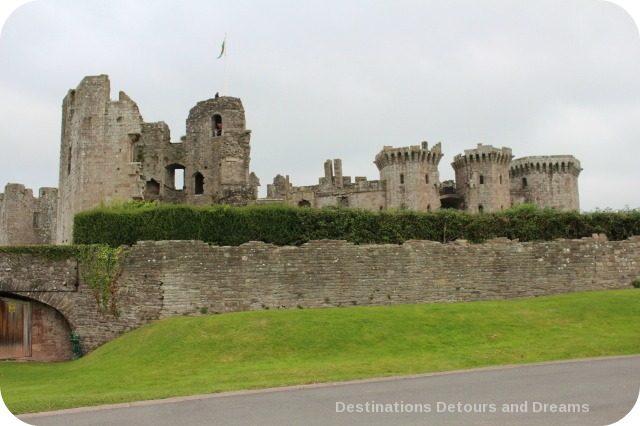
Impressive ruins of a late-medieval castle in southeast Wales
Raglan Castle, set atop a hill just north of the village of Raglan in south-east Wales, creates a commanding presence, visible from nearby roadways. Equally impressive is the view of the surrounding countryside from the castle grounds.
Raglan Castle (Castell Rhagland in Welsh) was built of two different kinds of sandstone and was designed more to impress than to serve as a fortress. Part castle, part palace, it was built late in the day in terms of castle building. More attention was paid to comfort than in earlier castles. Still it was strong enough to hold off Oliver Cromwell’s forces for thirteen weeks during one of the last sieges of the English Civil War. The castle was eventually conquered and destroyed. But enough remains in its ruins today to impress.
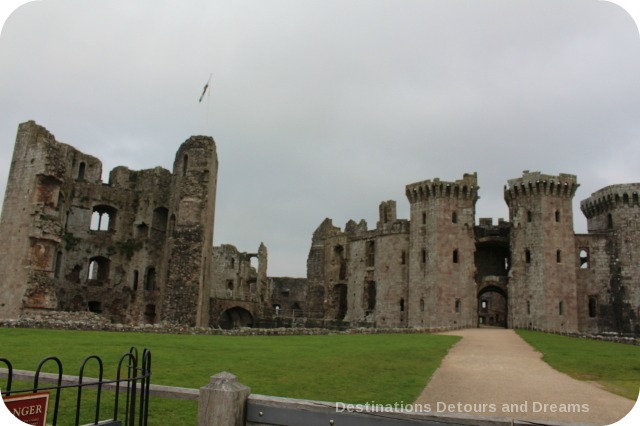
Building of the castle started in the 1430s by Sir William ap Thomas. He began building the Great Tower, subsequently known as the Yellow Tower of Ghent. The hexagonal tower was surrounded by a water-filled moat. Inside, there was a single large room on each floor.
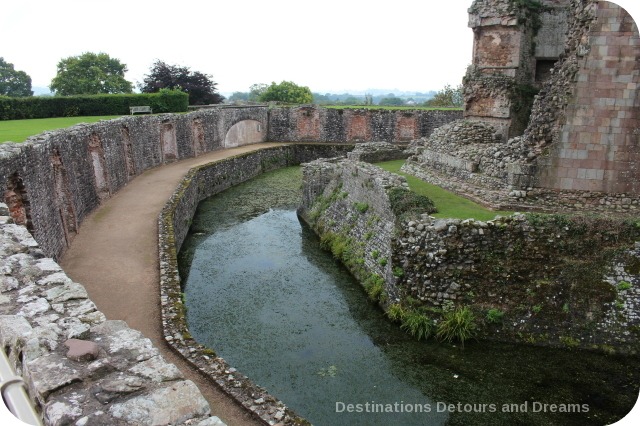
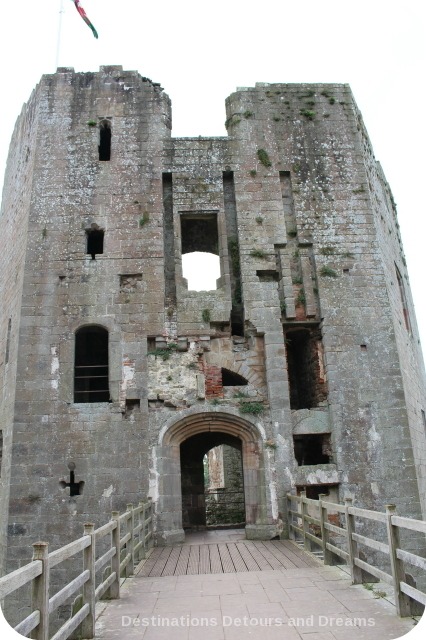
Following ap Thomas’s death, his son William Herbert continued to develop the castle. He turned the castle into a palace. He added the Gatehouse and the Pitched Stone Court. He built luxurious apartments for himself and his household set around a fountain courtyard.
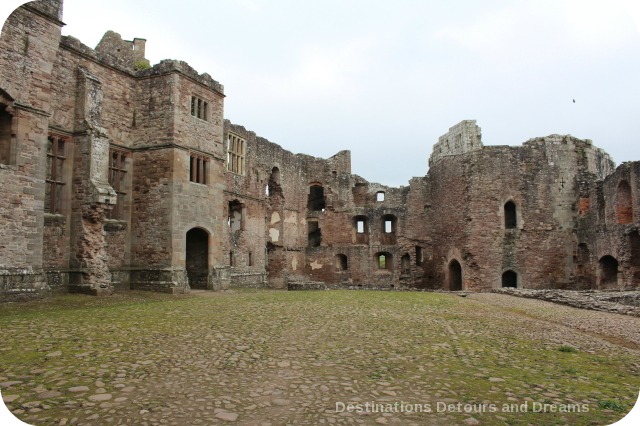
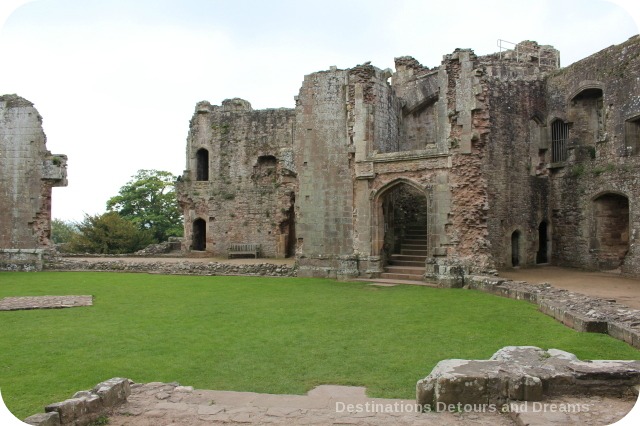
down the grand staircase into Fountain Court and then into the great hall
Herbert was beheaded following a defeat at the Battle of Edgecote in 1469, after which there were no major changes to the castle until the ownership of William Somerset, Earl of Worcester, in 1549 to 1590. He made extensive changes to the hall, created beautiful windows filled with heraldic glass, and added the long gallery, a Tudor status symbol. Parliamentary troops besieged the castle in 1646.
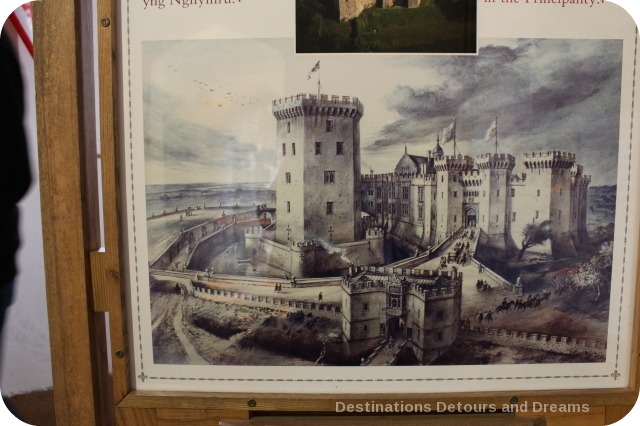
Rooms inside the Gatehouse contain displays detailed the history of the castle and its owners, complete with drawings of what it once looked like.
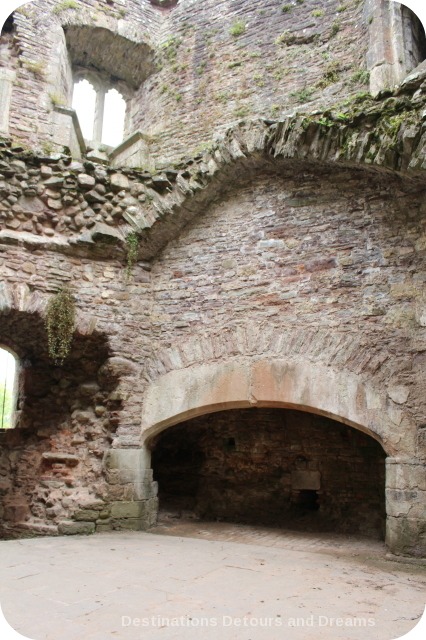
The kitchen was designed with banquets in mind and contained huge fireplaces, serving hatches, and drains. Cellars built over 500 years ago were well-stocked with wines from all over Europe.
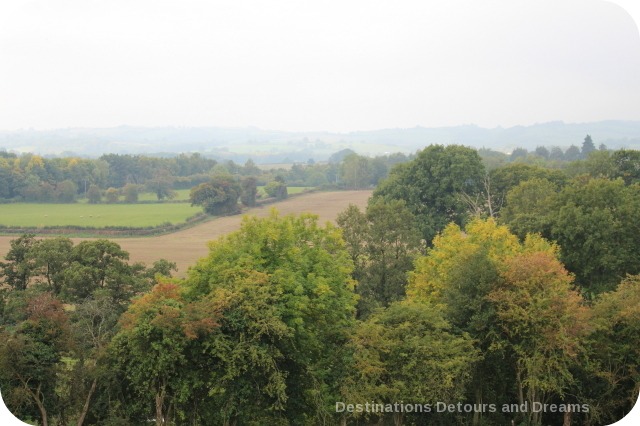
Raglan Castle is well worth a visit. It also has a lovely gift store.
Raglan Castle is open daily, although hours vary by season. There is a large car park on site. Although disabled persons and their companions are admitted free, there are steps within the castle grounds, making wheelchair access limited.
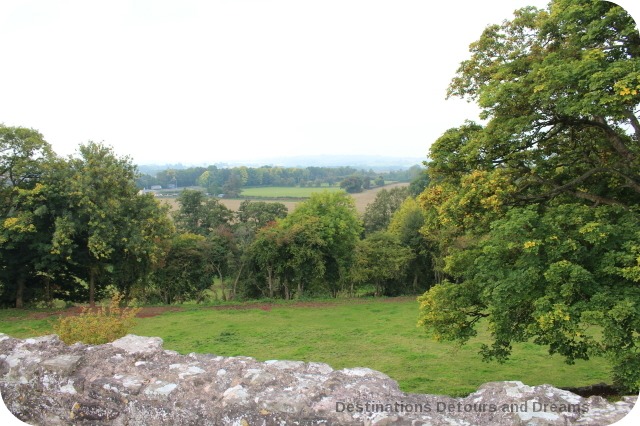
If you enjoyed this post, sign up for Destinations Detours and Dreams monthly e-newsletter. Get behind the scenes information and sneak peeks ahead in addition to a recap of the month’s posts.
PIN IT
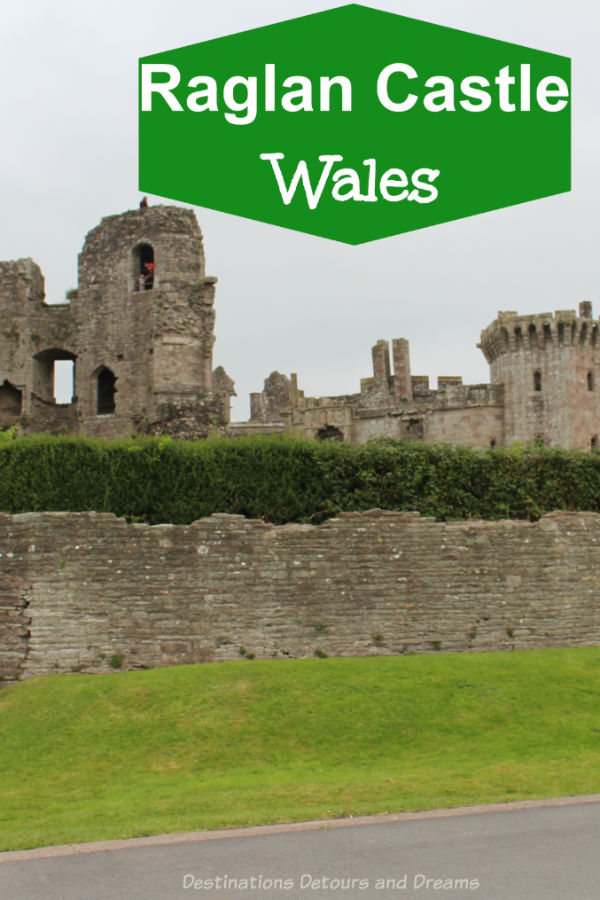

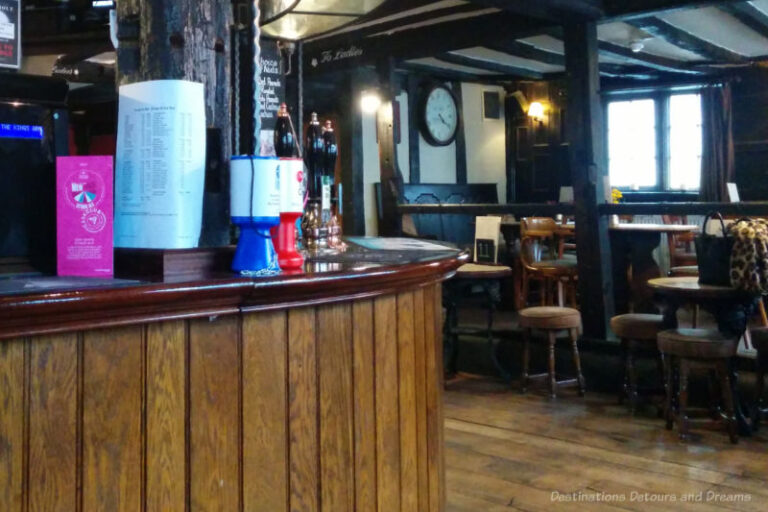
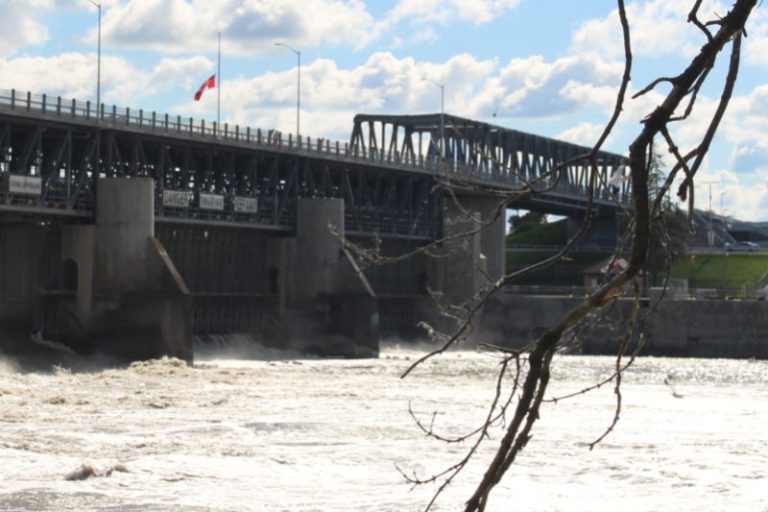
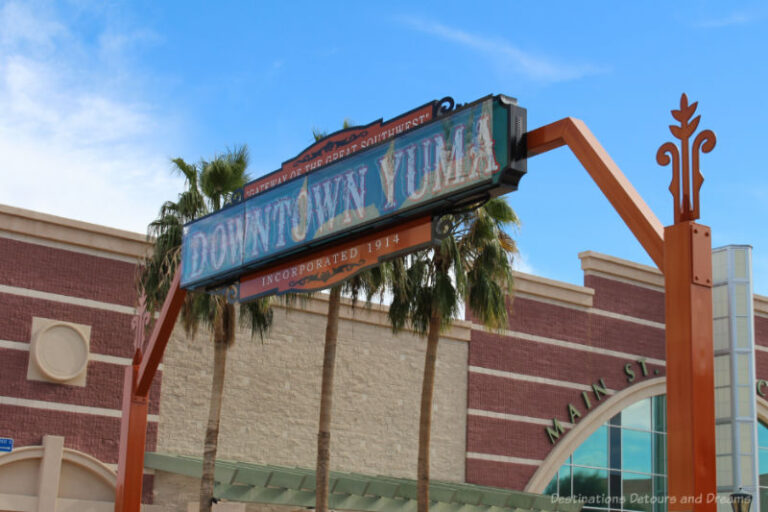
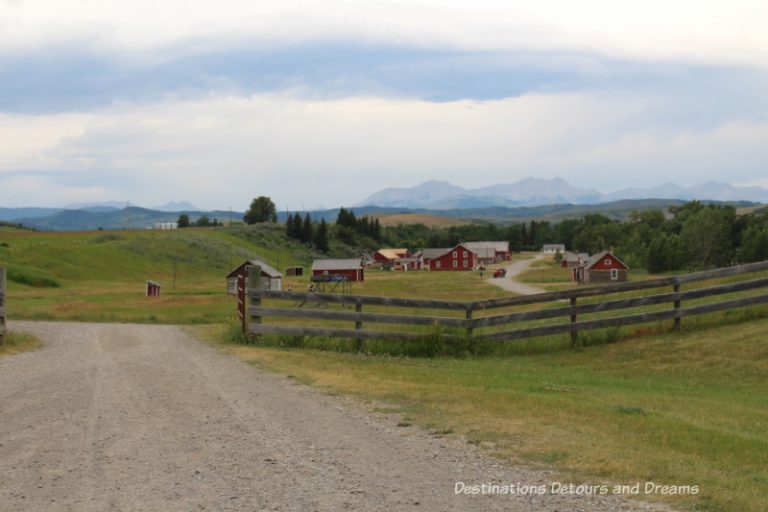
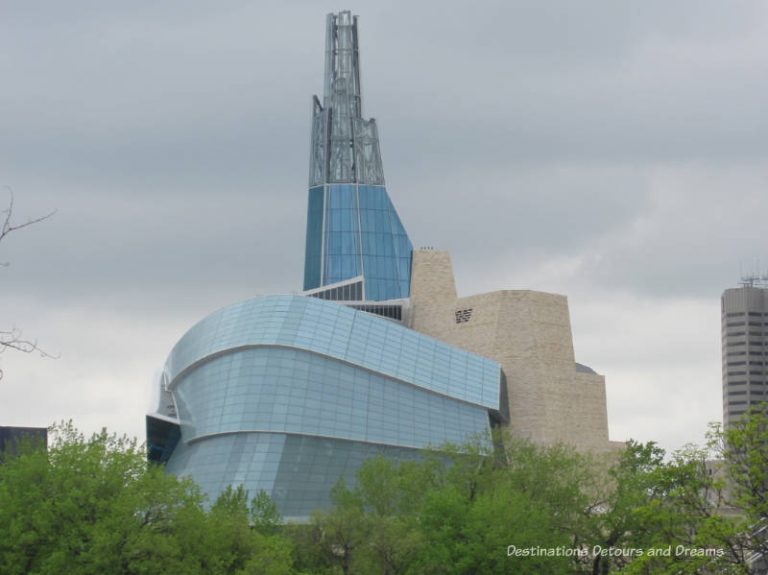
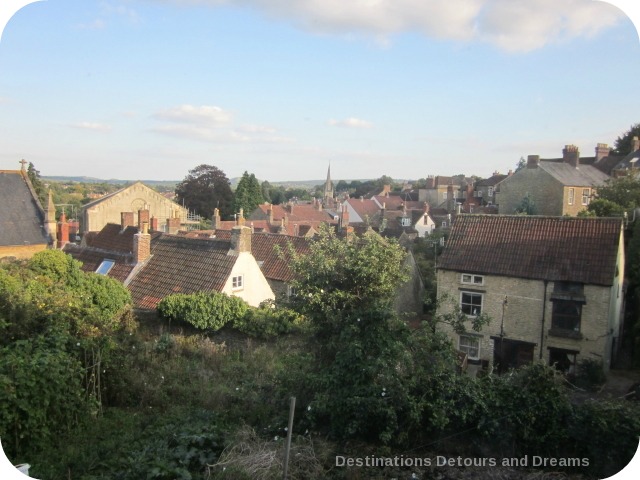
I suppose everyone is intrigued by castles. I’ve gotten to stay in a couple of them and I love to do that. This one is really scenic and has a great story.
Beth, I would love to stay in a castle some day.
I’ve been there! When my brother and his family lived in England it was his favorite castle. They would picnic there every so often. When I visited the family in Englad we would visit and do the same.
Susan, Raglan Castle is a great spot for a picnic.
What a wonderful post. I like the history of this castle that you provided. It is a shame many of these castles, if not most, have decayed due to the ravages of time or war. I wished we could get the funds to rebuild them to their former glory.
Thanks for sharing this great post with us.
William, it is a shame what war and time have done to the castles.
Wow, what a story! Stunning, too. Can’t imagine what it would be like to live there!
Jacquie, the displays inside the Gatehouse gave a fair bit of information to help the imagination envision life in the castle.
Am getting a tour with you of beautiful places in the UK I never visited despite living in London for 15 years. Thanks for sharing.
I’m glad you’re enjoying the tour Catarina.
Living in North America you might go to some historical house or castle that was built in the 19th century and think it’s pretty old. Nope. This is what is means to be old.
Ken, definitely older than most of the historical buildings in North America, although you can find native ruins older than this (such as the Hohokam ruins in Arizona).
Thanks for sharing the history of Raglan Castle. Looks like a great place to visit.
Thanks Sabrina
There is just something so admittedly appealing about exploring old ruins. Raglan Castle looks well worth the trip.
There is something appealing about exploring old ruins, isn’t there Jeri?
Donna, I so much enjoy these posts of yours. I loved seeing the photo of the moat. I’ve read about them of course, but seeing this picture – it really is true – a picture is worth a thousand words.
Thanks Lenie.
I think Beth is right, many people are fascinated by castles and that includes me. I’ve never stayed at one but I’d love to do that one day. Fascinating journey, thanks Donna!
Castles are indeed fascinating.
A castle with a real moat – how cool! And I’m glad I don’t have to cook in a giant fireplace like that. Thanks for the tour!
Meredith, that fireplace may have been the latest at the time, but I’m with you – I prefer my modern kitchen.
It is amazing that one castle can have so much history. It is fascinating to think how many lives were lived within those walls. And that it was destroyed, but its remains are still so breathtaking. Raglan Castle looks worth the trip.
Erica, it was a bit of a surprise to discover that ruins could be so breathtaking.
Thx for taking us to Raglan Castle, Donna. I would love to stay in a castle one day. As long as it’s not haunted!
Doreen, I don’t know if I would stay in a haunted castle either, but I think my daughter and niece would be attracted to one that claimed to be haunted.
My husband and I love castles! We’ve been in them in Italy, Turkey, and a couple of other places. These pics are terrific Donna.
Thanks Pat.
Donna — quite a few years ago I did work at agency for the Welsh economic development agency and had the good fortune to visit Wales for a week. It’s quite beautiful. Also has a respected opera company. Did you by chance hear any Welsh being spoken? Very strange language.
Jeanette, I did not hear much Welsh spoken. My husband and I tried to figure out the pronunciation of the Welsh place names.We wondered about so many towns starting with Llan. We asked at one local tourist office about it. The woman there didn’t know, but looked it up and said it meant something “parish” or land”.
I never get tired of touring castles, Donna–in person or with your blogs
Thanks Rose Mary